“For a house to be successful, the objects in it must communicate with one another, respond and balance one another.”
Andrée Putman, Interior Designer
The French interior designer knew what she was talking about. More is needed to fill a space, be it a room or a house. The success of interior architecture - and interior design - lies in how all elements communicate, establish a relationship and create something. A style. That's what we're talking about in this article: architectural styles that best suit customers, whether for aesthetics or functionality.
Interior architecture works on these concepts, making areas more appealing, sophisticated, functional, and comfortable.
More than thinking about decorative aspects, the interior architect guarantees the functionality, comfort, and aesthetics of the spaces where his clients will live. The functionality allows the intelligent use of the environment, considering flows, permanence spaces, activities, security, and all the clients' needs. The second goal of the interior architect is comfort. Here, issues such as lighting and ventilation, acoustic control, or thermal comfort are considered, valuing the ergonomics of the room. Finally, this area also aims to guarantee a pleasing aesthetic environment, combining aesthetic styles and the personal taste of its customers.
Therefore, working on an interior project implies knowing the architectural styles and their characteristics and the decoration trends. Only then will the professional be able to identify what will delight his client, adapting the style to the reality of the project. From layout to furniture, ergonomics to comfort, not forgetting materials and finishes, interior architecture styles reflect all these parameters.
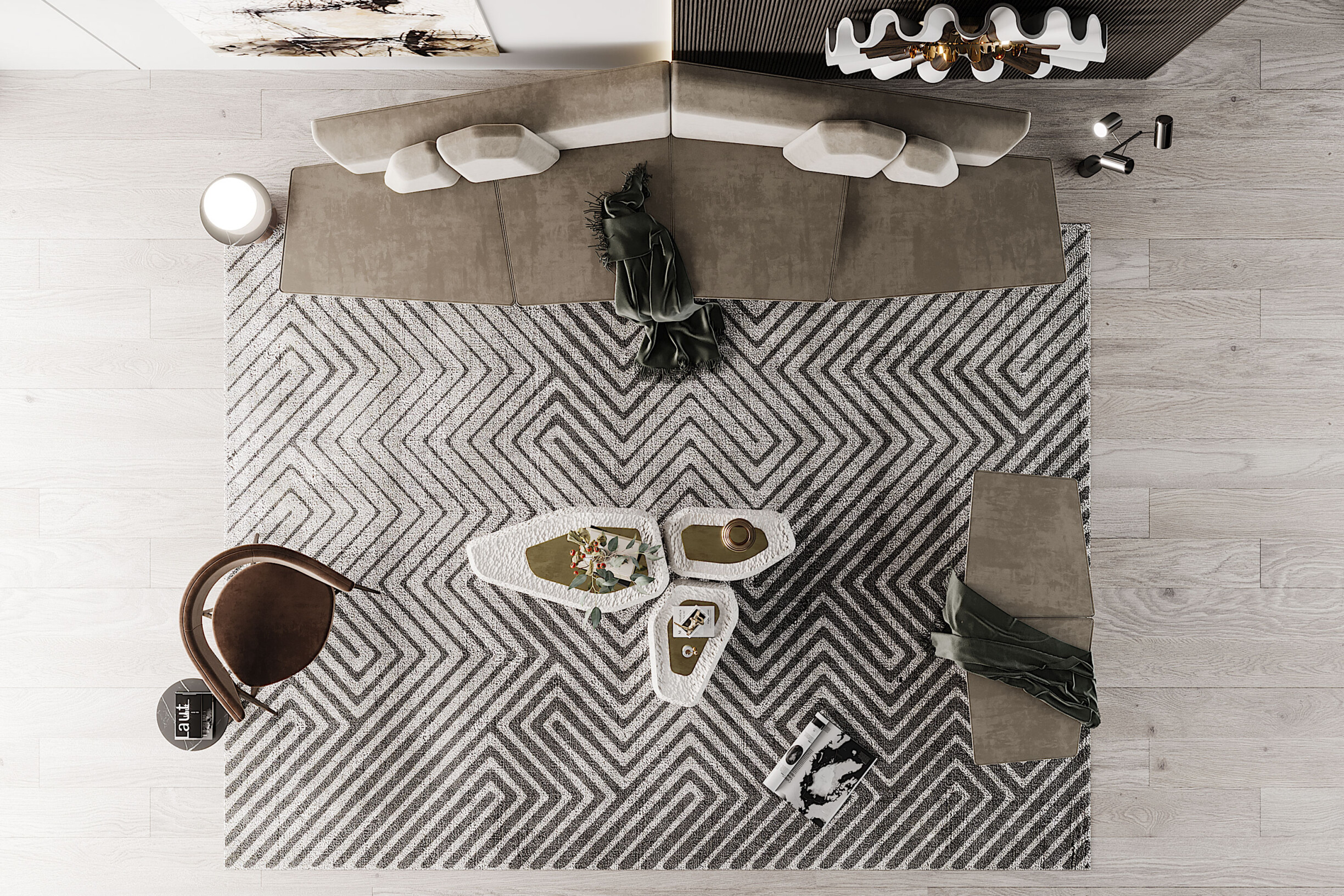
Choosing a decorative style is much more than defining which objects will be part of a room, as we have already seen. Between functionality, comfort, aesthetics, and the taste of its customers, the secret lies in the perfect combination of these four elements to create a harmonious environment and transmit the feeling of “home” to those who will live there.
In the process of defining the decorative style of a room, it is vital to take into account some issues, namely:
Of course, using just one style is optional, and combining elements from two or three styles is possible. Still, visual coherence guarantees harmony, so everything makes sense.
The first step in defining the interior architecture style of a space should be researching your client's objectives and their taste, adapting them to the division (or divisions) where they will work. An excellent option is creating a mood board that allows you to feed the creative atmosphere and give meaning to an interior architecture project.
Need to learn how to create a mood board? This blog article has all the tips and even six fantastic tools to help you visualize your ideas!
Like a style of dress, a decorative style has characteristics and elements that define it and meet personal taste. But, despite this, you can still follow some of the rules of the style you have chosen for a particular room mainly because there may be small details that make sense and others don't or even elements that please your client and others not so much.
The most important thing in defining a decorative style for a project is that it serves as a reference to harmonize the environment and provide good sensations.

Whether for functionality or aesthetics, each person has their preferences and needs. Knowing the various existing interior architecture styles will facilitate the creative process. Although there are several decorative styles, the following seven are the most common and famous today.
It's that style that never goes out of style! Although it may have new interpretations, assuming greater functionality, it is always in the spotlight and current.
Harmonious symmetries, elaborate ornaments, classic details, outstanding furniture, an abundance of decorative pieces, and elegant lines. These are the most striking features of interior architecture projects in a traditional style. Considering the grandeur of this style, as a rule, it is perfect for larger spaces, allowing the creation of glamorous environments.
In the rooms with a classic style, noble wood in dark tones predominates in the furniture and white marble, such as the Espigueiro cabinet from ALMA de LUCE, which translates to the traditional Portuguese style in the wooden slats.
The color palette is broad but sober: beige, white, light pink, and soft tones combined with burgundy, dark green, navy blue, or black. Silver, gold, and rust stand out in the finishes, especially in decorative elements and frames.
The aim is to achieve a refined and elegant decoration, almost like a work of art. Therefore, the decorative elements convey luxury: china cabinets, porcelain, silverware, busts, tapestries, paintings, books, lamps, mirrors, floral arrangements, and chandeliers, with yellowish and diffused lighting.
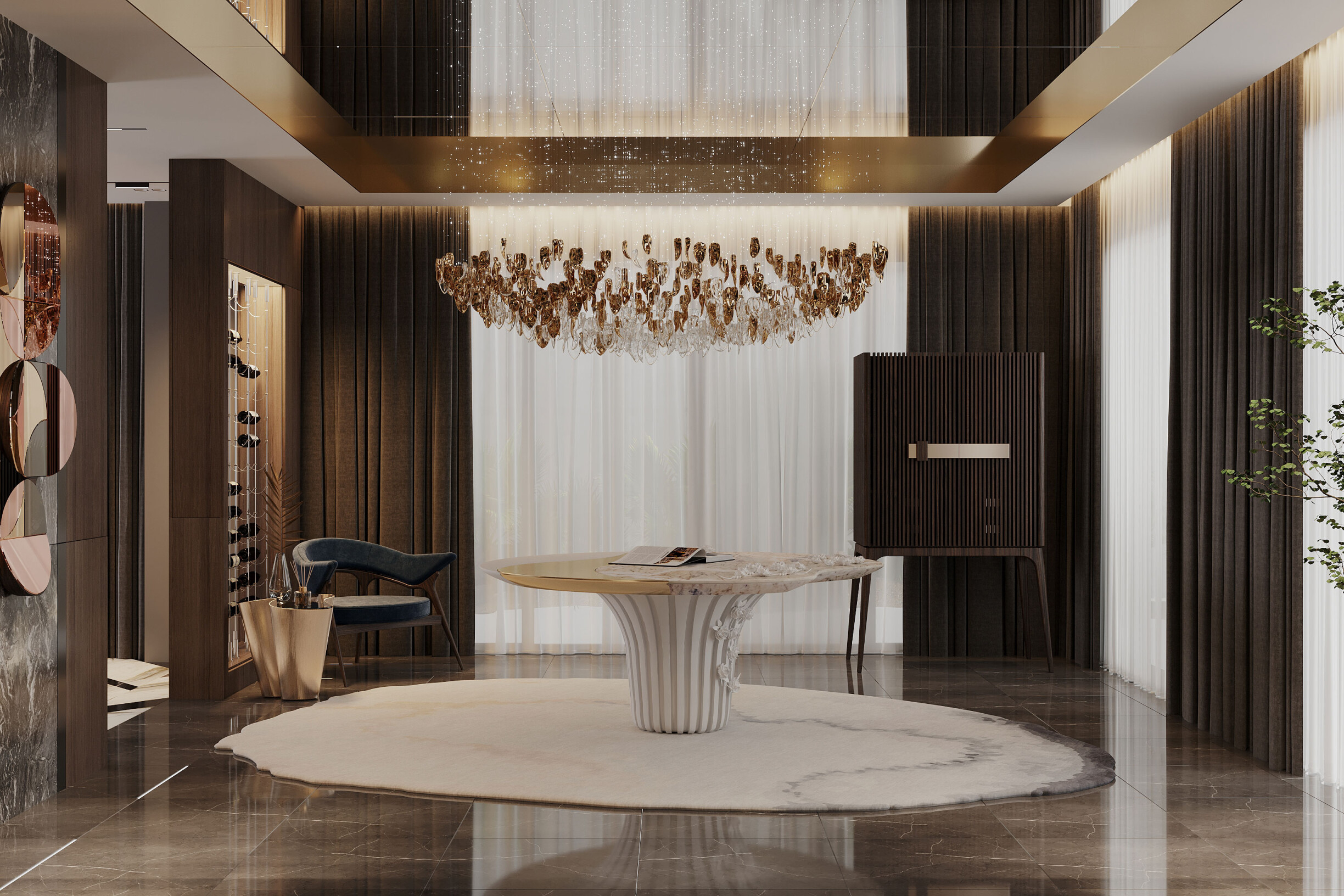
Similar to the classic, the romantic style goes further. It values intimacy and warmth in serene, delicate, smooth, and elegant environments that transport you to times marked by elegance and comfort.
The colors are essentially neutral, with color palettes in which white and pastels stand out, namely pink. Sometimes these neutral colors are contrasted with notes of richer colors, such as yellow, blue, or red. In addition, we must remember the floral prints that combine with an unpretentious decoration that values personal memories.
The furniture in a romantic style is marked by curvilinear features, rounded feet, and crafted pieces with some showy details. As you can see in this amazing Enxoval Cabinet, designed by ALMA de LUCE, with this romantic Style!
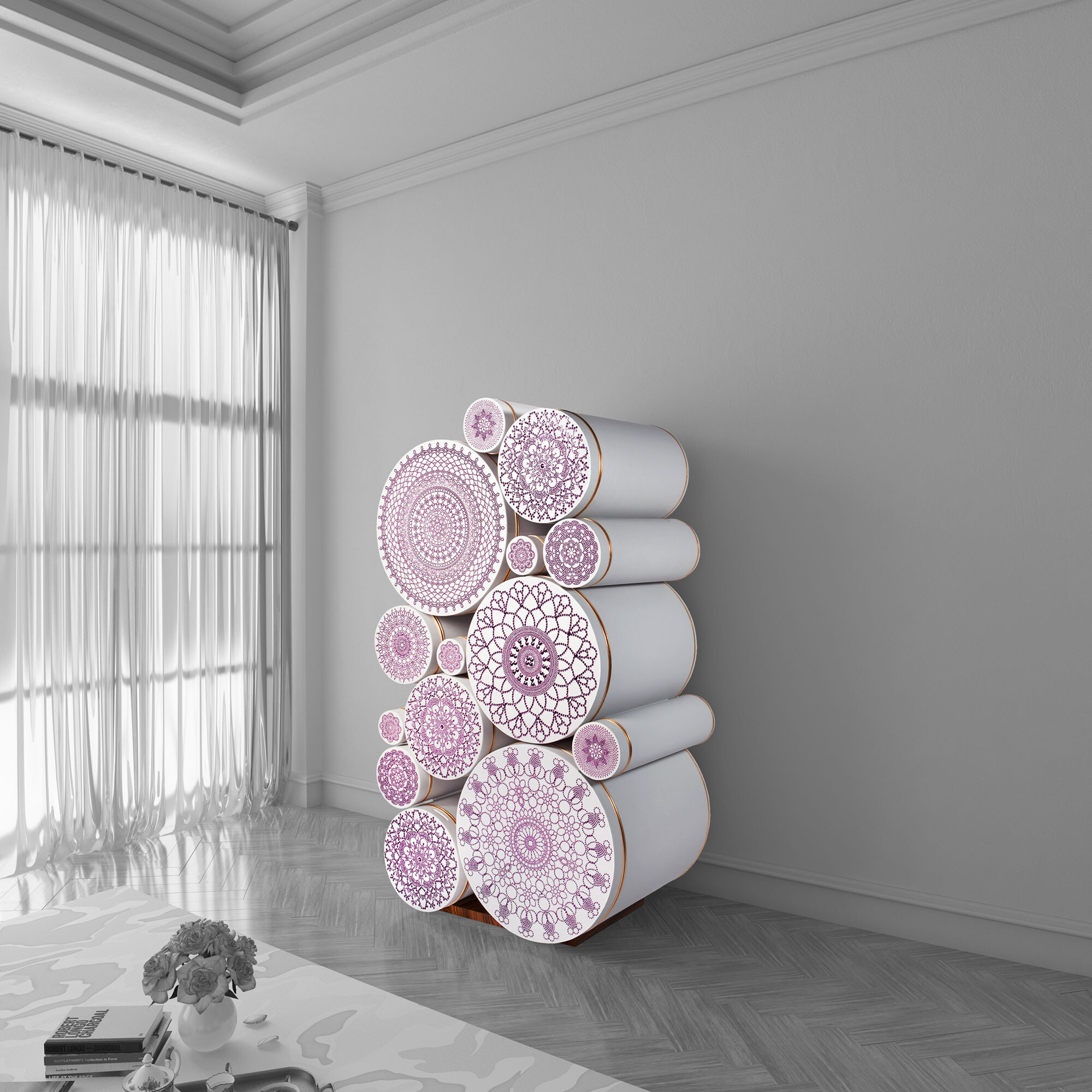
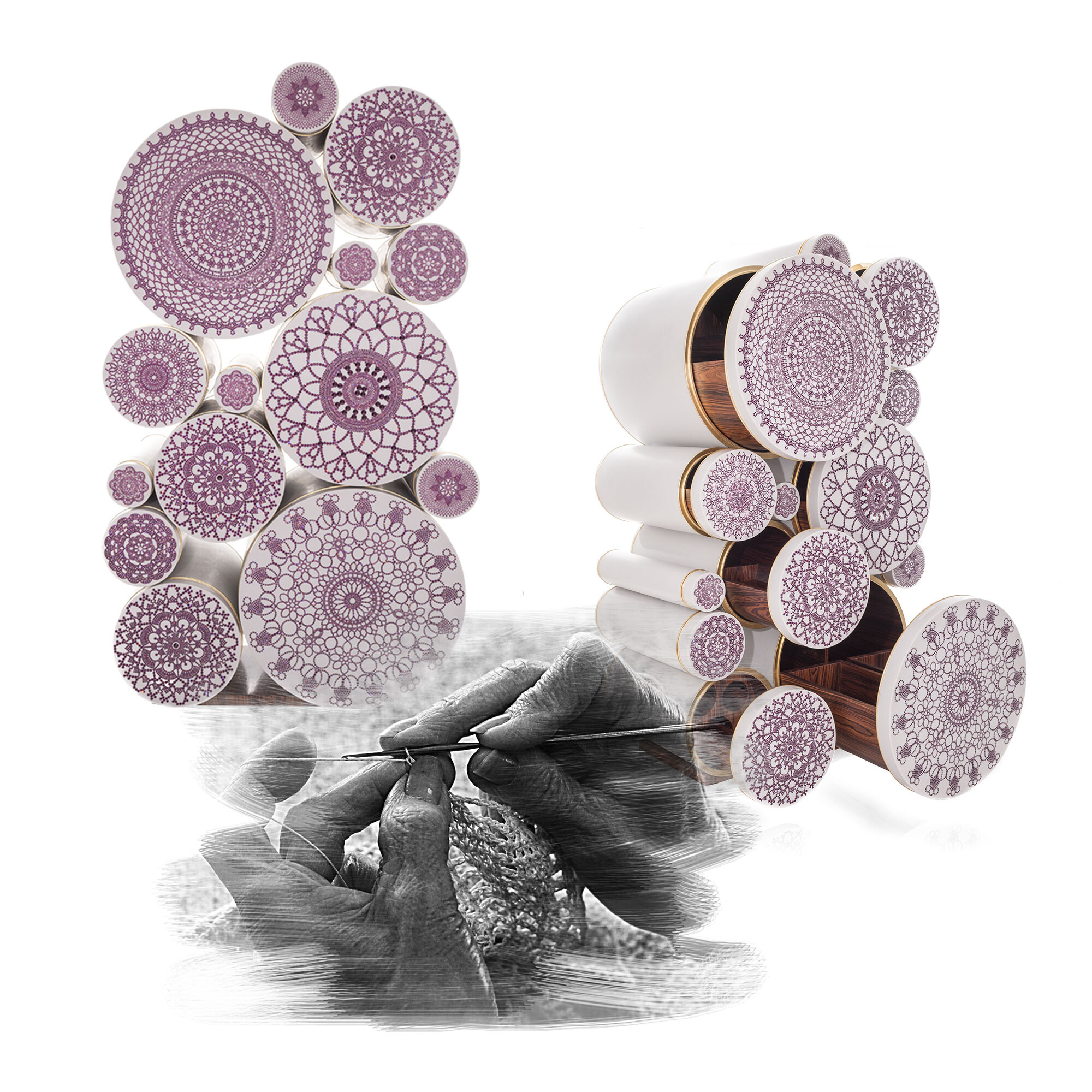
The apparent use of bricks, concrete, burnt cement, pipes, metal parts, and industrial lighting characterizes a style that emerged in New York in the 1950s. However, in a cold and raw style, warm colors, lighting, and sofas and armchairs break this feeling.
When we talk about tones, neutrals stand out, namely the colors of the materials and black. The metallics fit perfectly into the industrial style, giving it elegance. An excellent tip is to combine industrialization with metallic details and elements, such as the Tesla dining table from ALMA DE LUCE. Their legs are in polished metal with a unique brass effect that contrasts with the top in black lacquered glass and the wood in the same tone.

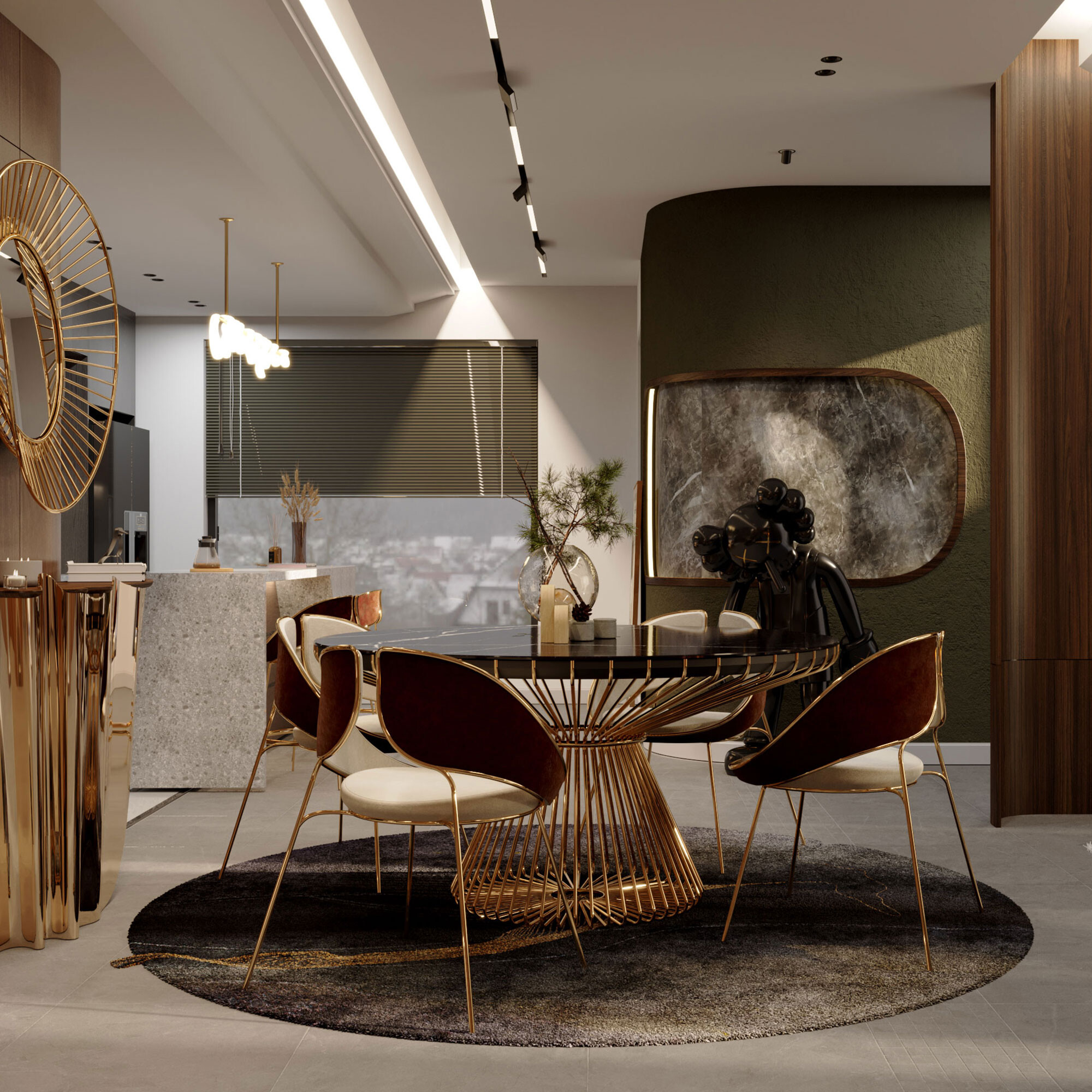
High technology combined with comfort, economy, and practicality. This is how high-tech or futuristic environments are. They are directly related to energy reuse, automation, and robotics, ensuring comfort, efficiency, and sustainability.
High Tech interior architecture extensively uses white LED lighting, but we also see purple and blue tones to create a more technological environment. The furniture, with subtle curves, stands out for its white tones that contrast with black or punctual vibrant colors. The primary materials used are metal, glass, aluminum, and stainless steel. The decor is minimal to non-existent.
This style tends to be colder and less inviting for homes and is usually applied in offices, technology companies, or areas with little permanence.
Less is more. This is the maxim that describes minimalist interior architecture. There is an emphasis on functionality over aesthetics and consumerism, with light colors and little furniture. Therefore, a configuration with wide spaces and natural light through, for example, glass and mirrors, stand out. Elements such as the Marqueyssac mirror from ALMA DE LUCE allow for a minimalist environment where the feeling of spaciousness is enhanced.
The furniture has a simple design with wood, aluminum, or stainless steel details. The fabrics tend to be smooth, with smooth textures, geometric, and without prints.

Are you viewing the country houses? This is the inspiration for the rustic interior architecture style, in which wood is the protagonist. In this style, wood is used as a coating, furniture, and structural element. Wood is also the inspiration for the primary tones of the rustic style, emphasizing a color palette composed of neutral and earthy colors.
To ensure naturalness and coziness, the decoration enhances the use of cushions, rugs, and warm lighting. The fundamental objective is to create a division with an informal, intimate, familiar, and cozy atmosphere.
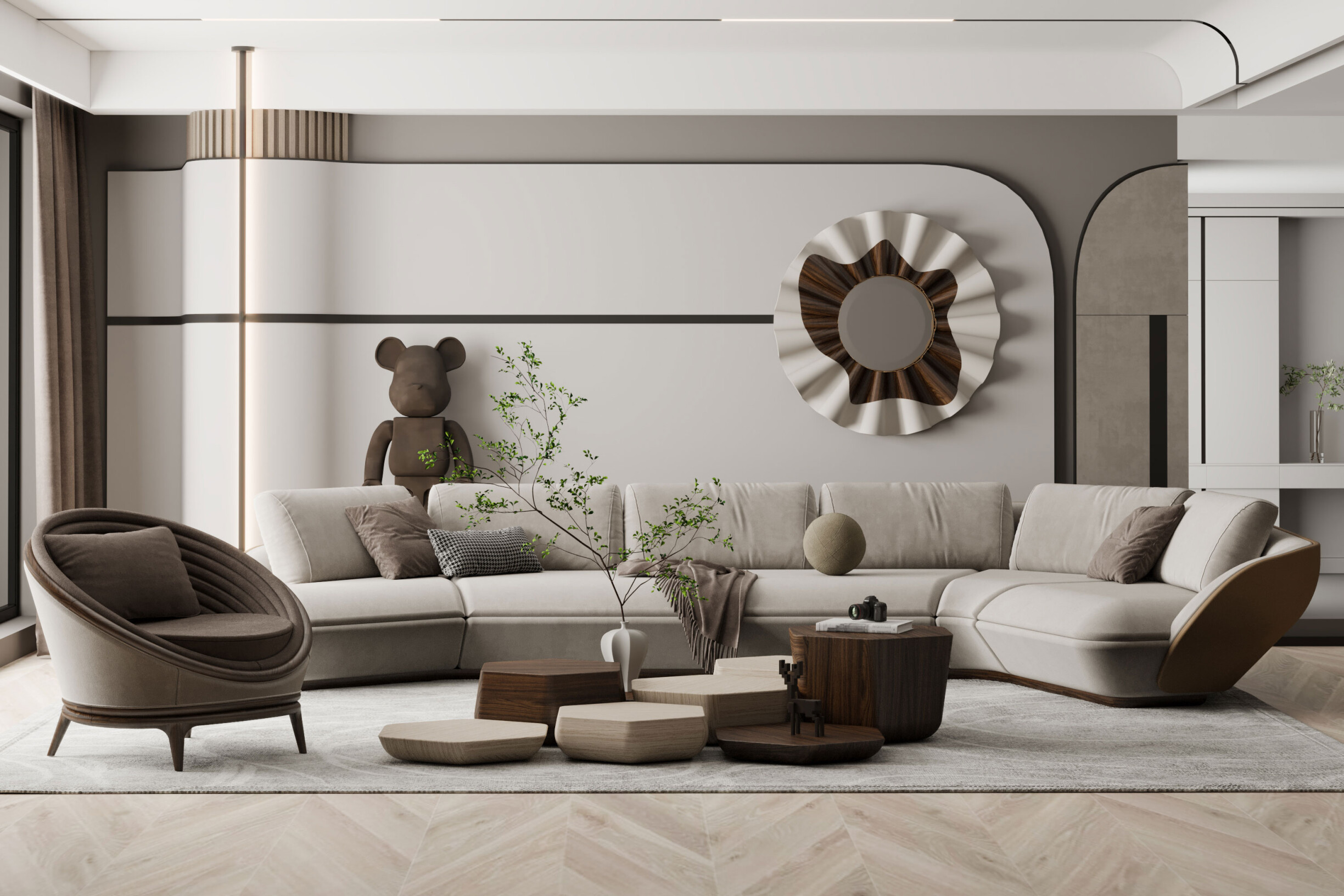
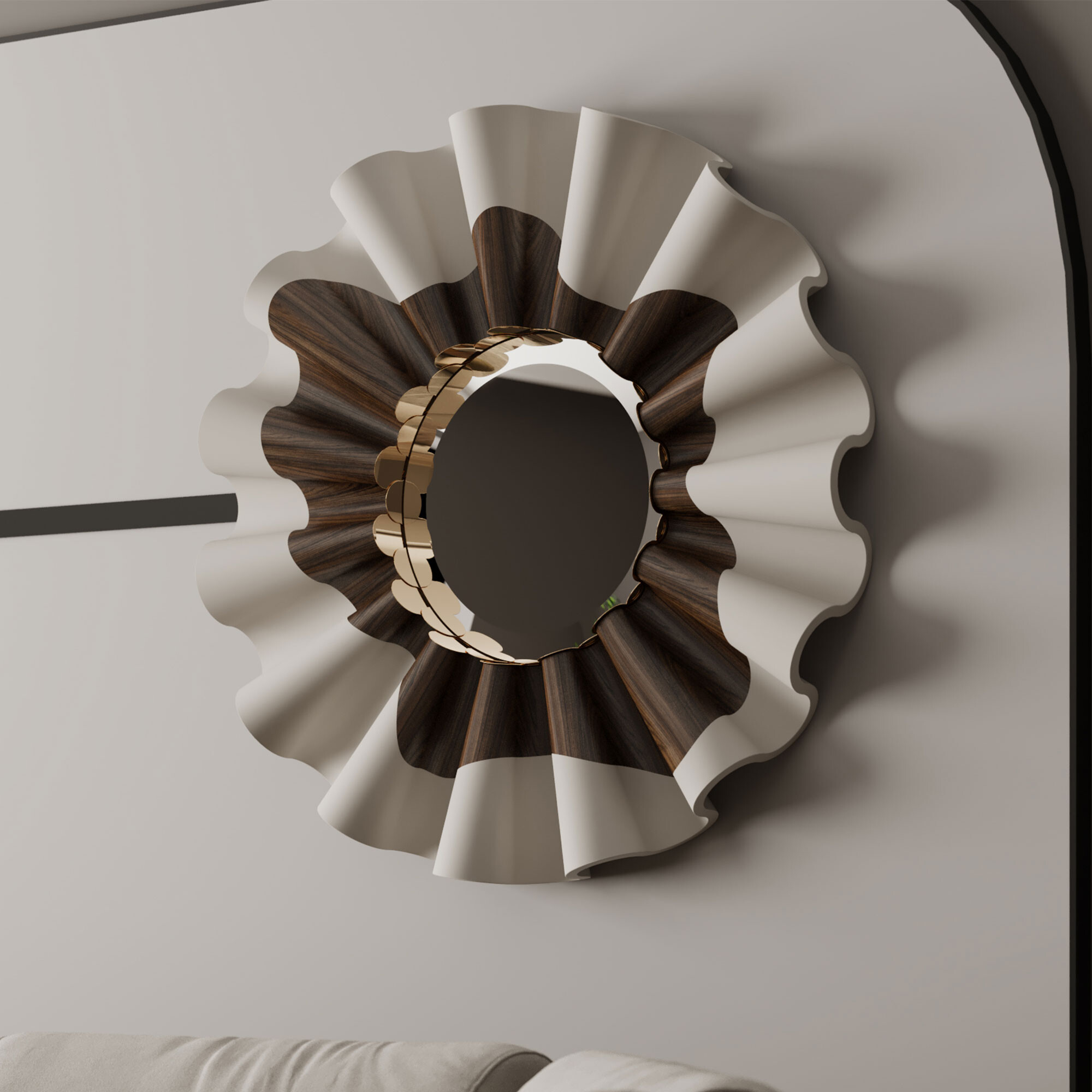
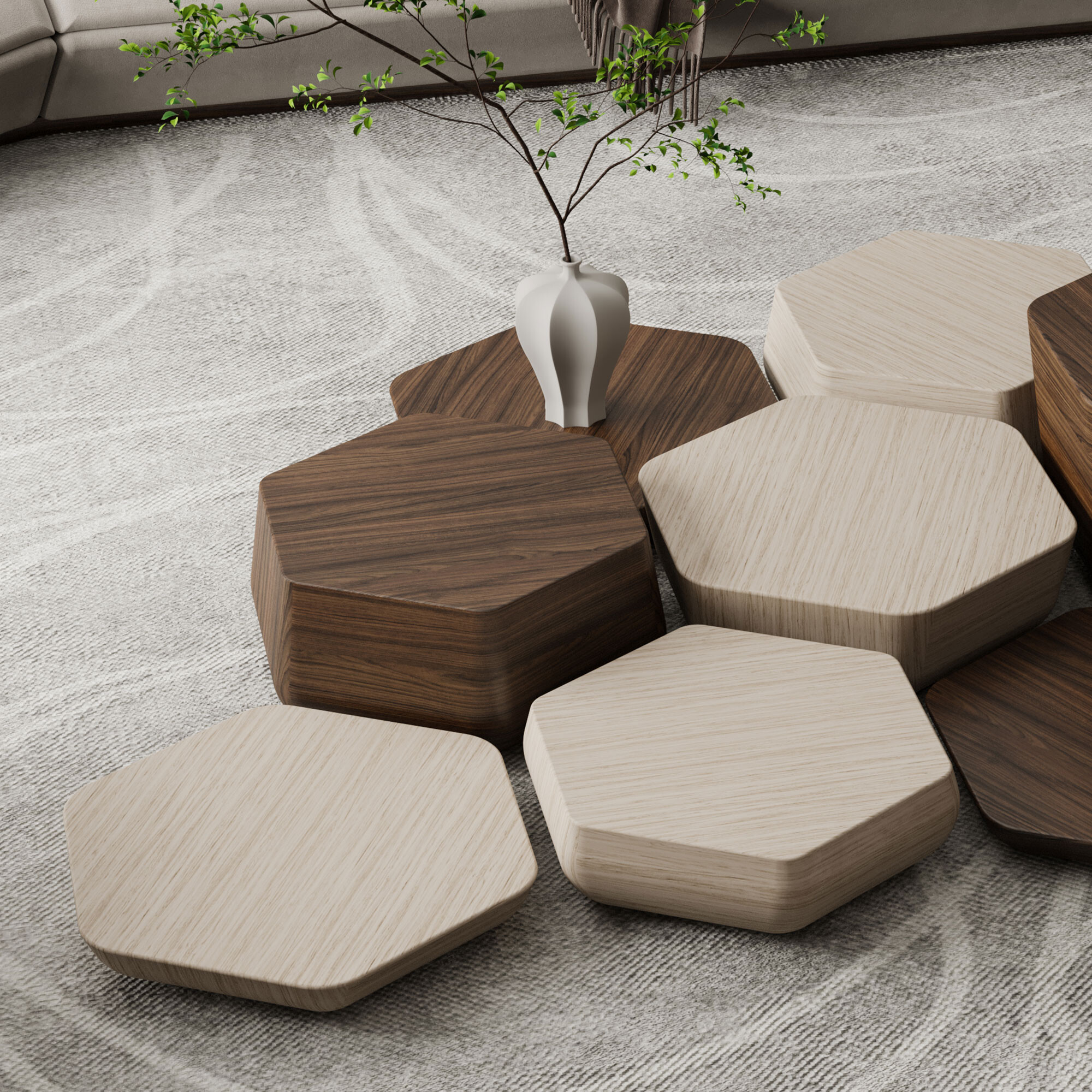
This style transforms a room into a true journey through different cultures. Therefore, it can be defined as an interior architecture style full of boldness and personality, wealth, and a mixture of influences and unique cultures. The source of inspiration is Eastern, African, and Arab countries and indigenous tribes.
From different prints to many colors, including wood and crafts, ethnic style can include many elements and a diverse color palette. So, how to choose the perfect color palette for this style? See our tips in this blog article.
In terms of furniture, handcrafted wood stands out, conveying lightness, combined with plants, rugs, cushions, bamboo pieces, wooden articles, clay, stone, and natural fiber textiles. Mudhif Chair is an excellent and fancy choice to achieve this style.
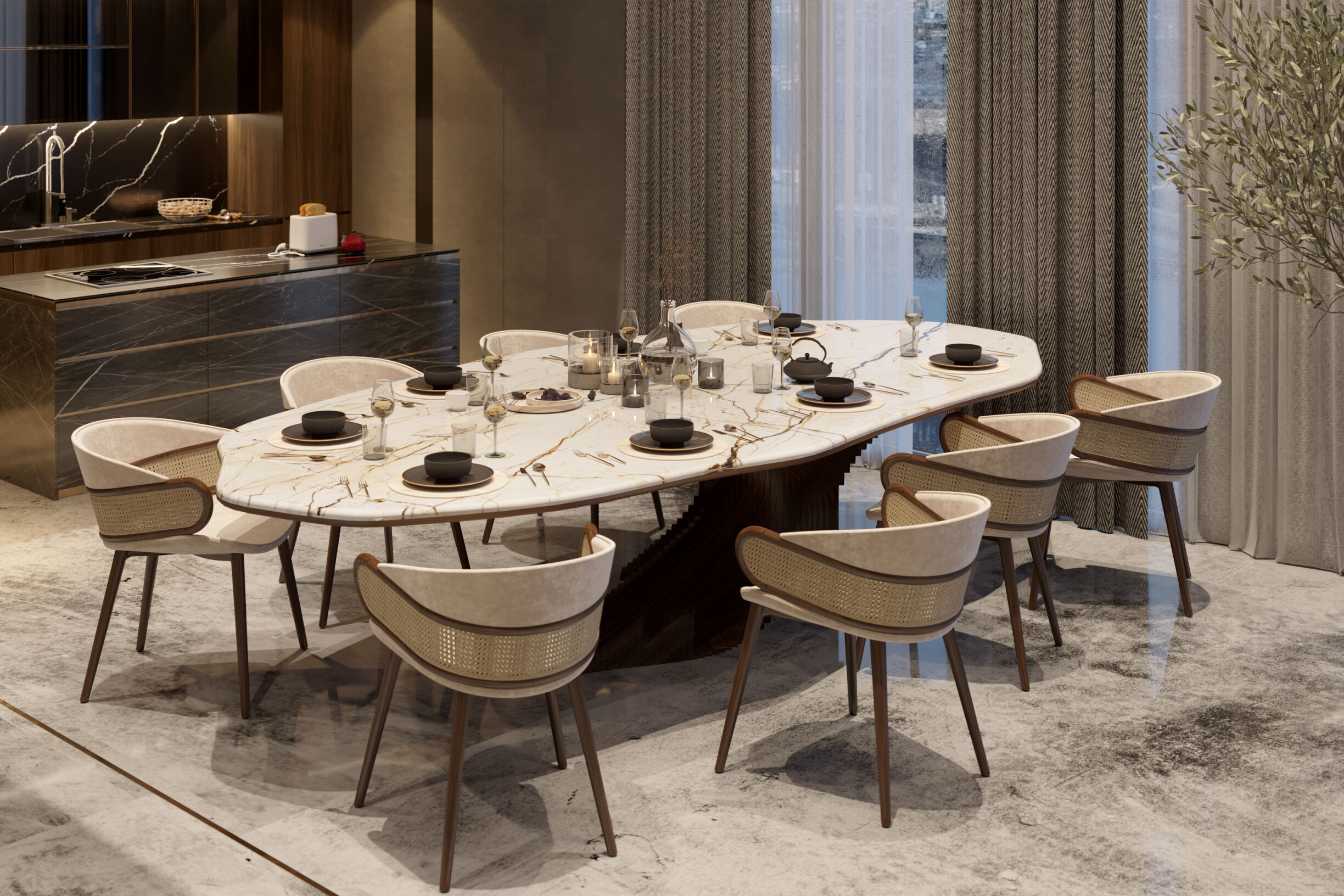
Which of these seven styles of interior architecture is your favorite? An interior project can include one or more (or even a mix) of several styles. Still, the most important thing is to guarantee sophistication, functionality, and the client's taste, a must-have these days.
Did you like our tips? So, stay tuned to our blog to receive more information and curiosities from the universe of architecture, interiors, and design!
Also, you can follow us on Instagram, Facebook, and Pinterest to get inspiration about interior architecture styles, furniture, materials, and finishes!